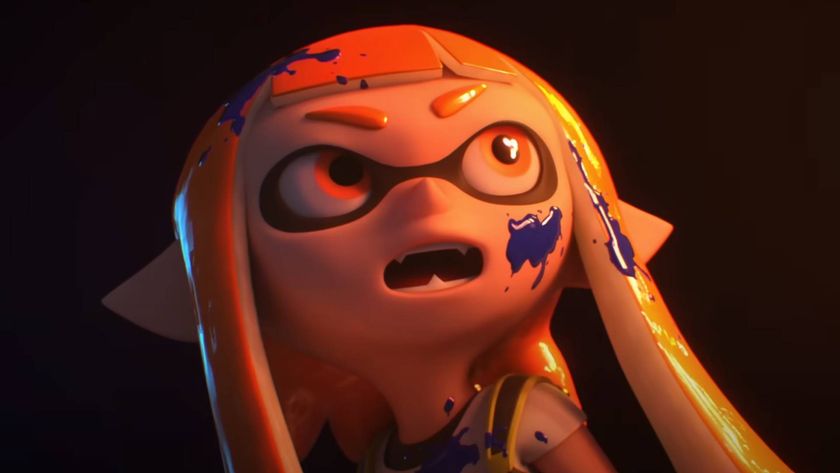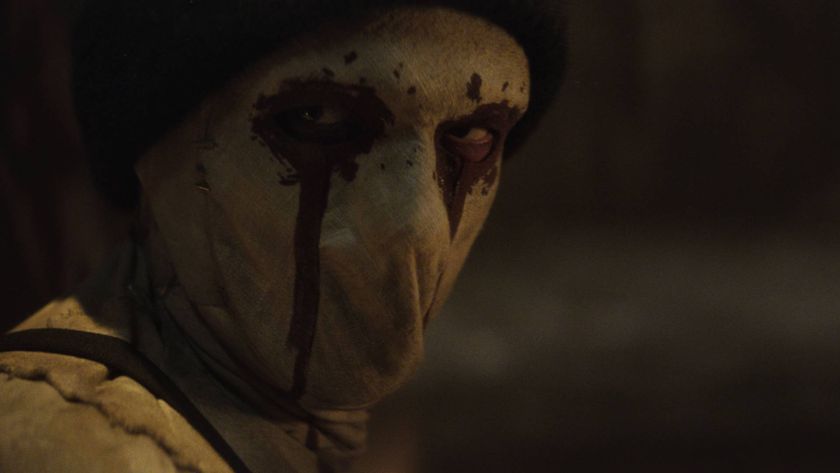The Making Of... No More Heroes
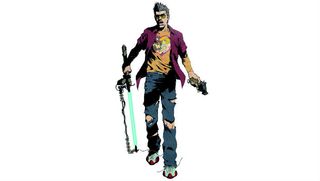
Everything began with Travis Touchdown. One of gaming’s most unlikely antiheroes, Touchdown’s tale is of an American otaku idiot who decides to use the beam katana he wins in an online auction to become a top-ranked killer and impress a girl, and it was the first bit of No More Heroes to pop into being. Once Goichi ‘Suda51’ Suda came up with his lead, based loosely on Jackass goofball-in-chief Johnny Knoxville, everything else followed.
“I wanted Travis to be like a big schoolboy who sometimes jokes around and is sometimes deeply serious, and who loves to fight,” Suda tells us in the meeting room of Grasshopper’s Tokyo office – itself as cluttered with character figures, DVDs and pop-culture ephemera as Touchdown’s own motel room. “Travis is a little similar to me. If I had been an American otaku, what kind of life would I have led? Of course, I’d have been a top-ranked assassin,” Suda laughs. “He’s a very human character, and one that fits within an action game.”
So everything began with Touchdown – except that perhaps it all started with Killer7. Suda’s 2005 GameCube collaboration with Shinji Mikami was a violent action game with heavily stylised cel-shaded visuals and a deep combat system, clearly laying the path that No More Heroes would travel. And despite a mixed critical reception, Killer7 became a cult classic in the west, prepping a fanbase for Touchdown’s madcap debut. Released on Wii in December 2007 in Japan and a few months later overseas, No More Heroes would cement Suda and Grasshopper Manufacture’s reputation for offbeat action, but it didn’t establish it.
Suda admits to us that his memory is hazy, but by his recollection the game was conceived sometime in early 2005, shortly before the release of Killer7. More significantly, the idea came some months before the unveiling of Wii at that year’s E3, and its controller at Tokyo Game Show a few months later. No More Heroes had originally been intended for 360, “but then we saw the Wii Remote”, Suda recalls. “It seemed perfect for the beam katana.”
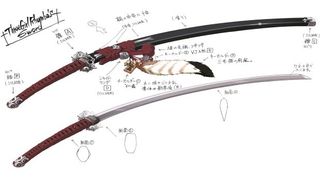
Named after a song and album by The Stranglers and infused with punk attitude, No More Heroes is a game of boss battles, of learning enemy patterns and knowing when to attack or defend. It allows players to brandish the Wii Remote as a laser sword, holding it high or low and pressing A for corresponding attacks, with the Nunchuk for movement. Although the original Wii Remote could not offer perfect parity with sword swings, No More Heroes still ended up being a better lightsaber sim than any Star Wars game, combining physical action and precision timing to great effect. And the bizarre addition of wrestling throws only made the game more appealing.
It wasn’t easy to perfect this fight system, though. “We didn’t know how to program for the Wii controller yet, and making it slash the way we wanted was extremely challenging,” says battle programmer Toru Hironaka. “It took a long time to make it feel satisfying.”
“We found that attacking with only motion control was exhausting, so that’s when we added the use of the A button,” Suda adds. “We made about four or five iterations before we nailed the combat.”
Sign up to the 12DOVE Newsletter
Weekly digests, tales from the communities you love, and more
Touchdown earns newer and stronger beam katanas throughout the game, but his abilities are nonetheless hampered by a brilliant bit of balancing: the weapons all run on batteries. Attacking and blocking wear down the power, which can be charged by scarce power-ups or by pushing the 1 button and shaking the Remote vigorously, leaving Touchdown vulnerable to attack. Suda says that this limitation was a way to stop the combat becoming too easy.
“I owned a flashlight that you could shake to recharge its battery,” he says. “I thought a motion like that would suit the Wii Remote, and it also looks like, uh…” He mimes waggling the controller near his crotch, laughing. “That kind of motion is very Travis.”
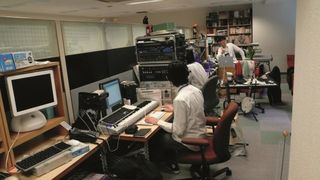
Its controls are only part of what make the game such a joy to play, with much of the appeal coming from the parade of colourful boss battles. Inspired by the duels in the 1970 cult film El Topo, the premise is that in order to work his way up the leaderboard of the United Assassins Association (UAA), Touchdown has to enter fights against ten killers. This progression is soon disrupted by story twists, but reaching the next eccentric boss and figuring out his or her weakness proves a powerful draw.
Taking inspiration from American subcultures such as superhero comics and the sexually charged female archetypes of a thousand B-movies, these memorable antagonists include singing cowboy Dr Peace, who Touchdown fights in a baseball stadium (Hironaka: “It’s hard to get close to him in the stadium, which made it a unique battle”); Holly Summers, a soldier with a prosthetic leg who has dug invisible pit traps in the beach on which they duel (Hironaka: “Those traps drove some people crazy”); and Bad Girl, a blonde bombshell who uses her stable of loyal gimps to grief you (Suda: “People still cosplay as her today”).
But Suda is a master of subverting expectations, and not every fight ends as the game’s structure might have dictated. After a lengthy build-up, for instance, Letz Shake and his gargantuan Earthquake Maker get sliced in half by yet another adversary in anticlimactic yet comical fashion. “The development schedule was looking tight, and there were so many boss battles already, so I decided to write the Letz Shake fight out of the script,” Suda laughs.
The game was also originally due to end with Touchdown’s death at the hands of Sylvia, the UAA agent who used her sexuality to manipulate him throughout the game. After the final ranked match, she was to shoot him – but her charm was considered deadly enough.
“Sylvia knows she’s sexy and she uses it as a weapon,” says senior character artist Takashi Kasahara. “She was an easy character to model because her personality was so strong. It wasn’t my intention when I made her, but early in development someone commented that she reminded them of Scarlett Johansson.”
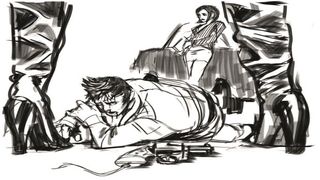
With so much violence, sexual innuendo and swearing in the English-only script, it seems almost incredible that No More Heroes was originally a Wii exclusive. But since the small team of around 30 was building the game with its own bespoke engine over a cycle of less than two years, it was just too difficult to develop it for multiple platforms. And in any case, Suda insists the platform holder made no complaints about the content.
“They were very supportive, especially Nintendo Of America and Nintendo Of Europe,” he says. “In Japan and also in Europe, we released a lighter version, where the heads don’t fly like they do in the American version. The mature content was only in the American version.”
Besides, the violence is tempered by playful presentation, No More Heroes putting its heritage front and centre by implementing a mishmash of retro styles. Touchdown’s energy is a pixellated heart-shaped gauge; the post-boss scoreboards resemble something from an ’80s arcade cabinet, and sound effects include bleeps and bloops reminiscent of 8bit Nintendo games.
“Travis is an otaku, and those elements were little peepholes into his world,” Suda says. “For No More Heroes, I wanted to mix up all kinds of cultures, including videogames.”
As for the cel-shaded visuals, Suda says using strong light and shadow was a thematic choice. Kasahara also draws a link to Suda’s legacy: “Since it was a game about an assassin, we wanted to reference Killer7, which also used cel-shading. But it wouldn’t be interesting if it looked exactly the same, so we made it look grittier.”

The game’s one major flaw is its hub world. In between ranked fights, Touchdown can explore the town of Santa Destroy, visiting locations where he can learn new skills, upgrade his beam katana or buy clothes. But Santa Destroy is a ghost town, a sparsely populated and eerily quiet open world. Unlike the swordplay, Touchdown’s chunky Schpeltiger motor scooter is clumsy, with poor collision detection, while popup in Santa Destroy is extreme. The result looks cheap, and Suda knows it. “I wanted to do more, but we didn’t have time and the budget wasn’t that big,” he says. “That was the limit of what we could do.”
Still, the open-world section does serve a purpose, which is to act as a palate cleanser. To earn entry into the boss fights, players have to undertake deliberately monotonous part-time jobs, such as collecting coconuts from trees or mowing the lawn – tasks based on numbing repetition.
“During the fight sections, you tense up and have to be alert, so in the open-world section you can take it easy,” Suda says. “Travis doesn’t just fight; he also has to live his life… If you have to work a job, it makes you look forward to the fights even more.”
Ultimately, the combat proved so addictive and the presentation so charming that many critics and players found it easy to forgive the game’s shortcomings. “It reviewed better than we’d expected, which made us very happy,” Suda says. “We thought the game was fun to play with the Wii Remote, but we weren’t sure how the public would take to it. It’s such a strange game, and Travis is an idiot, so I wondered how it would fare overseas. But in the end the reaction was even better in the US and Europe than in Japan.”
Indeed, the original Wii version of the game sold some 290,000 copies in North America and 160,000 in Europe, plus a less-than-thrilling 40,000 in Japan. A sequel, No More Heroes 2: Desperate Struggle, was quickly confirmed, again exclusive to Wii, and the original game was ported to PS3 and Xbox 360 as No More Heroes: Heroes’ Paradise (handled by Japanese publisher Marvelous Entertainment and Feelplus).
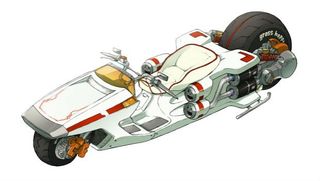
Grasshopper rarely makes sequels, preferring to focus on new IP where possible, but although he had been so close to killing off his hero for good, Suda says he was eager to return to Touchdown’s weird little world for Desperate Struggle. “No More Heroes was a smash hit as far as we were concerned, and I wanted to return to it and to make it a series over which we would take great care,” he says. “I often get asked to make a third game. Right now we’re busy with Let It Die, but Travis is a character we could even return to in ten years’ time. When the timing is right, I’d like to do so.”
In addition to spawning a sequel, No More Heroes expanded on what Grasshopper had begun with Killer7, framing it as a top-rate action-game studio with a subculture streak and setting in motion a loosely linked ‘series’ of thematically similar titles, including 2012’s giddily gaudy zombie slasher Lollipop Chainsaw and 2013’s dark but grandiose Killer Is Dead.
Suda knows he owes it all to Touchdown – and he feels that in the assassin lies not only a bit of himself and Johnny Knoxville, but also a bit of all of us. “Travis is a loser who eventually finds purpose,” Suda says. “OK, it’s as a killer, but in his chosen field he grows stronger and finds success. And as his fighting skills increase, so does his spirit. It’s a story about growing up. We all have to fight in our daily lives and to try hard, and by doing so our horizons become broader.
“Travis is a fighter, and he always looks forward to the next challenge. I wanted to make a game that would inspire players to feel excited about life.”
Edge magazine was launched in 1993 with a mission to dig deep into the inner workings of the international videogame industry, quickly building a reputation for next-level analysis, features, interviews and reviews that holds fast nearly 30 years on.

Assassin's Creed Shadows was originally envisioned without Yasuke, but Ubisoft wanted the full feudal fantasy: "We were sort of making a stealth tank, and it didn't quite work"
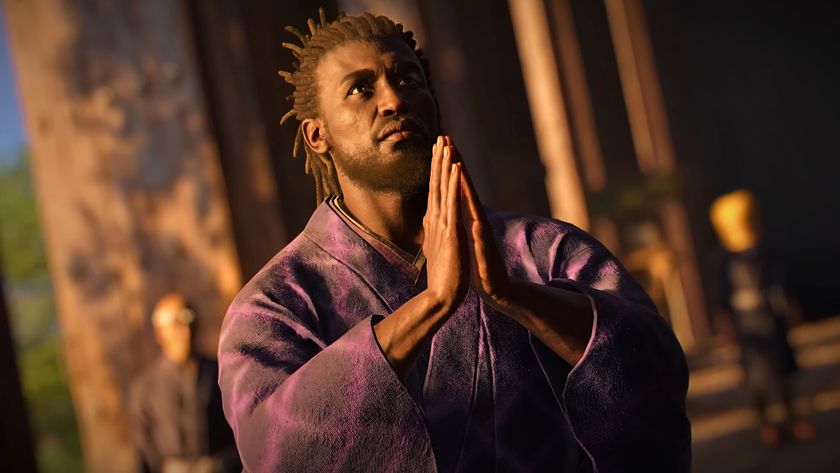
Assassin's Creed Shadows lead says dual protagonists are "a cool thing" the new action RPG "does better than what we've done in the past"

